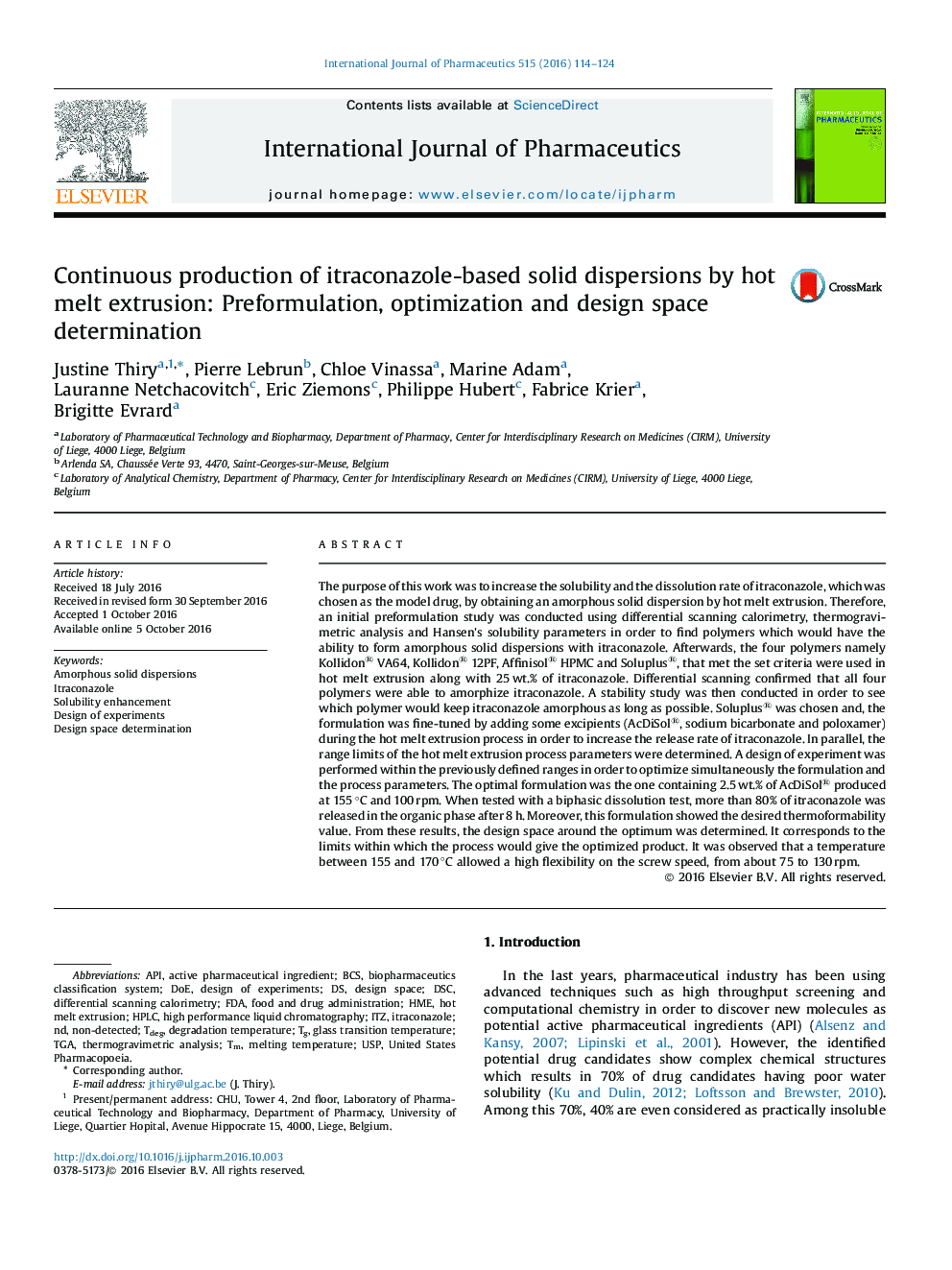| کد مقاله | کد نشریه | سال انتشار | مقاله انگلیسی | نسخه تمام متن |
|---|---|---|---|---|
| 5550850 | 1557302 | 2016 | 11 صفحه PDF | دانلود رایگان |
The purpose of this work was to increase the solubility and the dissolution rate of itraconazole, which was chosen as the model drug, by obtaining an amorphous solid dispersion by hot melt extrusion. Therefore, an initial preformulation study was conducted using differential scanning calorimetry, thermogravimetric analysis and Hansen's solubility parameters in order to find polymers which would have the ability to form amorphous solid dispersions with itraconazole. Afterwards, the four polymers namely Kollidon® VA64, Kollidon® 12PF, Affinisol® HPMC and Soluplus®, that met the set criteria were used in hot melt extrusion along with 25 wt.% of itraconazole. Differential scanning confirmed that all four polymers were able to amorphize itraconazole. A stability study was then conducted in order to see which polymer would keep itraconazole amorphous as long as possible. Soluplus® was chosen and, the formulation was fine-tuned by adding some excipients (AcDiSol®, sodium bicarbonate and poloxamer) during the hot melt extrusion process in order to increase the release rate of itraconazole. In parallel, the range limits of the hot melt extrusion process parameters were determined. A design of experiment was performed within the previously defined ranges in order to optimize simultaneously the formulation and the process parameters. The optimal formulation was the one containing 2.5 wt.% of AcDiSol® produced at 155 °C and 100 rpm. When tested with a biphasic dissolution test, more than 80% of itraconazole was released in the organic phase after 8 h. Moreover, this formulation showed the desired thermoformability value. From these results, the design space around the optimum was determined. It corresponds to the limits within which the process would give the optimized product. It was observed that a temperature between 155 and 170 °C allowed a high flexibility on the screw speed, from about 75 to 130 rpm.
173
Journal: International Journal of Pharmaceutics - Volume 515, Issues 1â2, 30 December 2016, Pages 114-124
